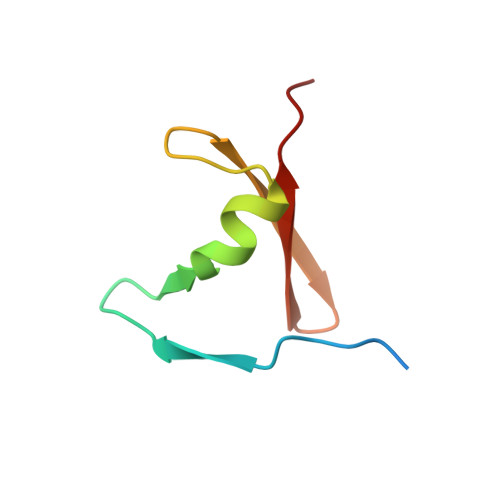AbrB-like transcription factors assume a swapped hairpin fold that is evolutionarily related to double-psi beta barrels.
Coles, M., Djuranovic, S., Soding, J., Frickey, T., Koretke, K., Truffault, V., Martin, J., Lupas, A.N.(2005) Structure 13: 919-928
- PubMed: 15939023
- DOI: https://doi.org/10.1016/j.str.2005.03.017
- Primary Citation of Related Structures:
1YFB, 1YSF - PubMed Abstract:
AbrB is a key transition-state regulator of Bacillus subtilis. Based on the conservation of a betaalphabeta structural unit, we proposed a beta barrel fold for its DNA binding domain, similar to, but topologically distinct from, double-psi beta barrels. However, the NMR structure revealed a novel fold, the "looped-hinge helix." To understand this discrepancy, we undertook a bioinformatics study of AbrB and its homologs; these form a large superfamily, which includes SpoVT, PrlF, MraZ, addiction module antidotes (PemI, MazE), plasmid maintenance proteins (VagC, VapB), and archaeal PhoU homologs. MazE and MraZ form swapped-hairpin beta barrels. We therefore reexamined the fold of AbrB by NMR spectroscopy and found that it also forms a swapped-hairpin barrel. The conservation of the core betaalphabeta element supports a common evolutionary origin for swapped-hairpin and double-psi barrels, which we group into a higher-order class, the cradle-loop barrels, based on the peculiar shape of their ligand binding site.
Organizational Affiliation:
Department of Protein Evolution, Max-Planck-Institute for Developmental Biology, 72076 Tübingen, Germany.













